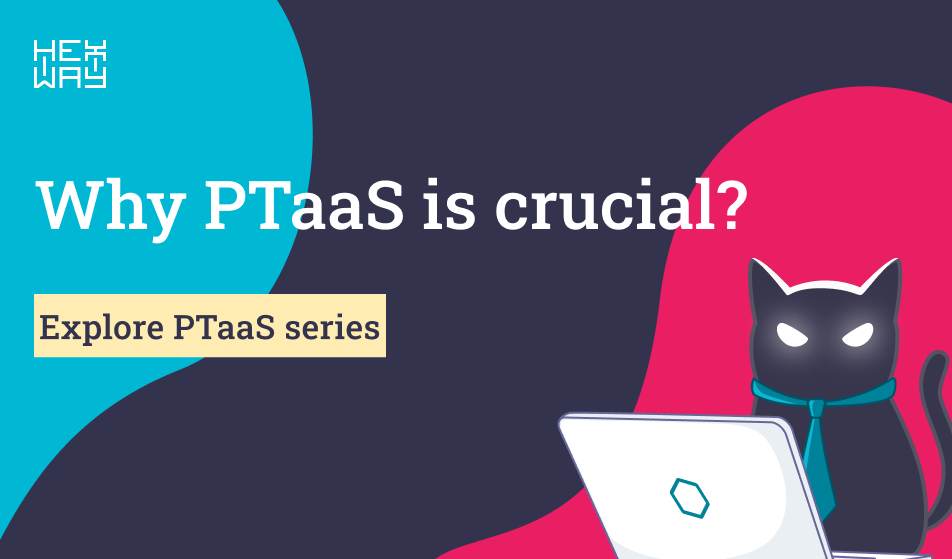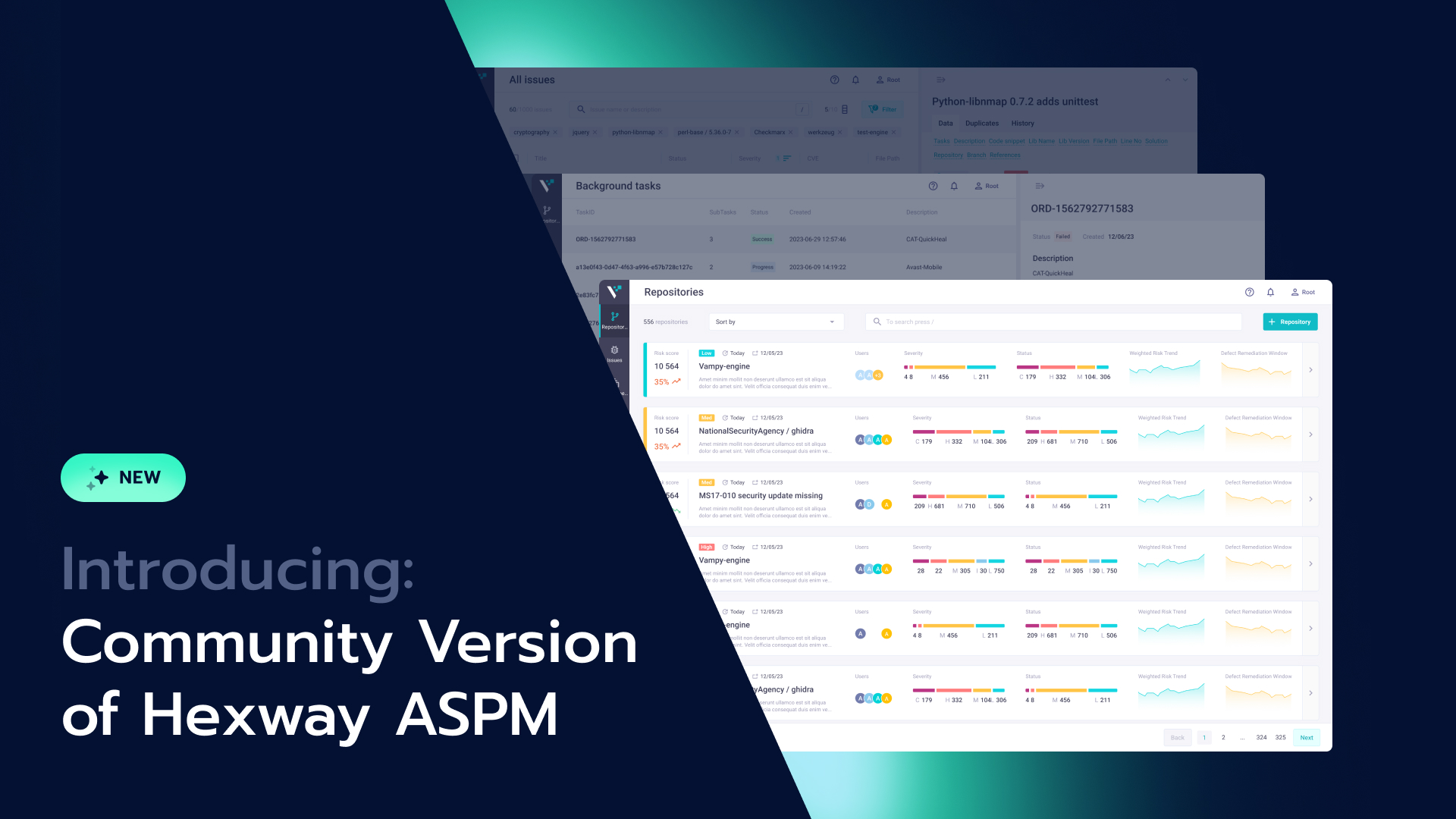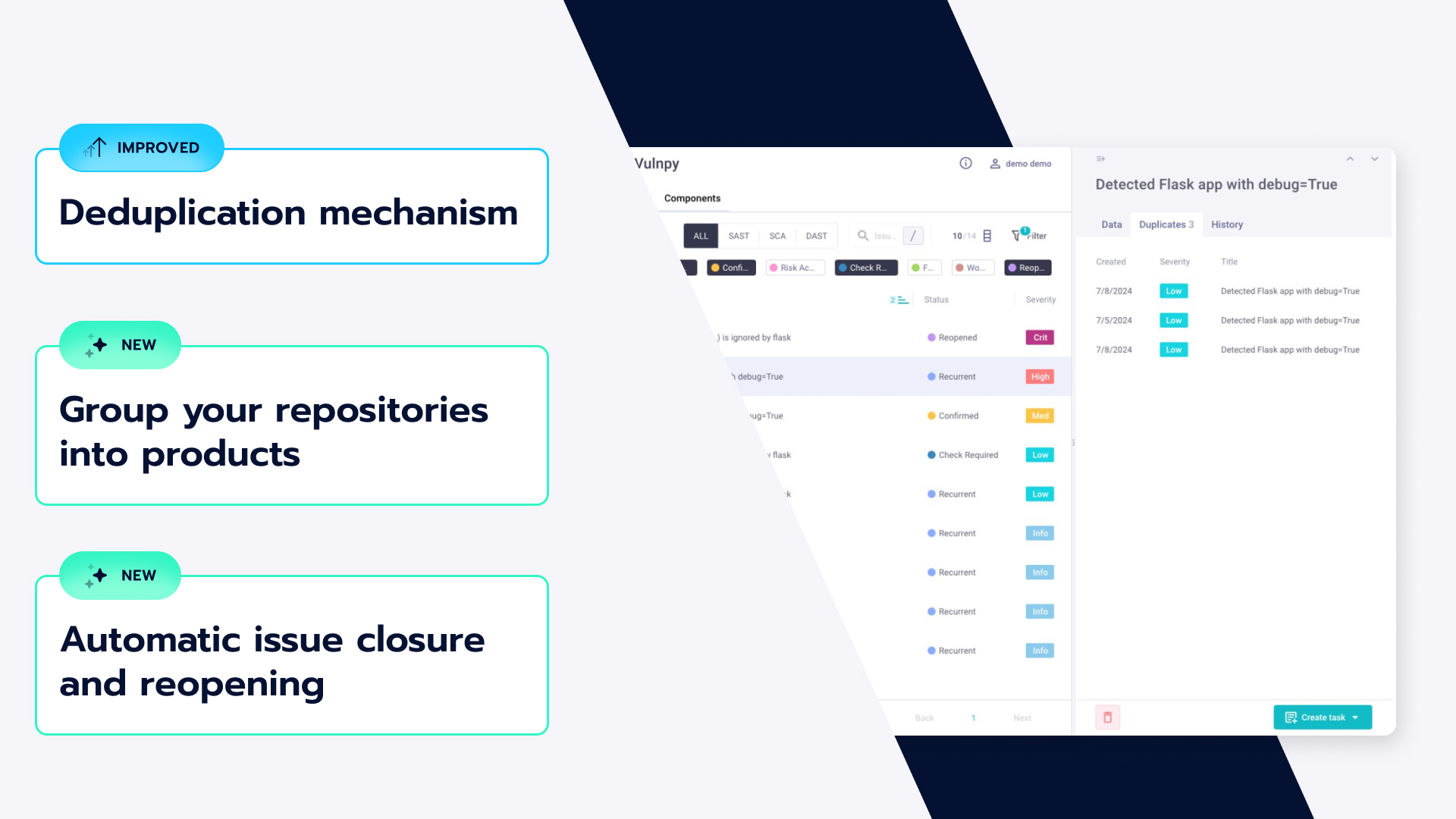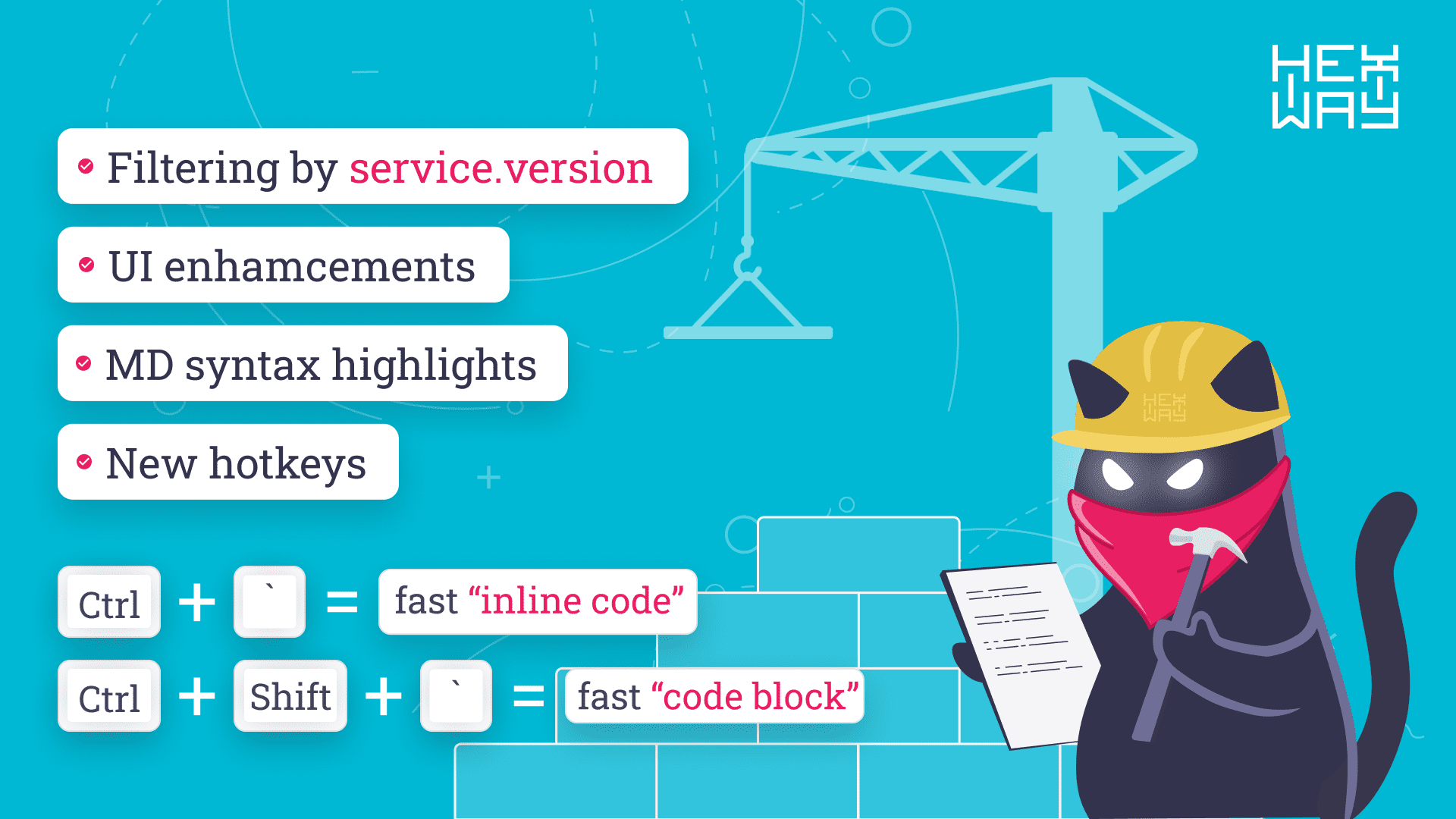Why PTaaS is Crucial for Modern Cybersecurity?

Let’s take a look at the growing importance of PTaaS in today’s technology landscape, even more so as organizations are migrating towards a cloud-first approach.
In the last few years security landscape has truly evolved, with an overwhelming volume of undisclosed vulnerabilities being exploited. Furthermore, threat actors trade 0-day exploits and critical security flaws on dark web forums, transforming once exclusive knowledge into a profitable business for the highest bidder. Traditional penetration testing methods can’t provide this level of security and adequate protection against such rapidly evolving threats.
Here comes Penetration Testing as a Service (PTaaS) to help pentesters solve the most common problems. By adopting the Software as a Service (SaaS) model, PTaaS revolutionizes penetration testing, ensuring a continuous and adaptive testing environment rather than sporadic, one-off engagements. With emerging cyberattacks occurring daily, annual penetration testing is insufficient, resulting in avoidable gaps in an organization's security posture. PTaaS addresses this issue by providing ongoing, up-to-date testing that adapts to the latest threat landscape.
What is PTaaS?
Before understanding how PTaaS benefits pentest providers, Blue Teams, and other in-house security members, it is important to clarify what exactly PTaaS is. The SaaS revolution inspired one of the biggest pentest changes in traditional pentest methods. Moving from on-prem, periodic testing, with the introduction of PTaaS, pentest moved to cloud-first provisions allowing organizations for on-demand testing facilities. Not just that, PTaaS focuses more on reporting, communication and collaboration which was not done previously, leading to robust testing due to the two-way channel between pentesters and developers. And while the SaaS model is more focused on just “automation”, PTaaS takes it one step further: while giving the option to automate pentesting using an array of different tools they also allow you to leverage human intelligence and skills in order to carry out high-level manual pentests.
With its flexible access and wider coverage, PTaaS tends to fill the holes left by traditional methods. The risk that newly discovered vulnerabilities might exist in the system is no longer there as PTaaS makes sure pentests services are available when needed. Scheduled automated scans ensure continuous coverage is provided, which can then be aligned with the existing security infrastructure to generate alerts in case of critical findings, which can be worked upon. Furthermore, efficient communication between testers and developers ensures quick turnaround time and faster mitigations being applied. PTaaS provides this and much more. In the next section, let’s dig deeper into specific risks and shortcomings that PTaaS solves.
How is PTaaS helping your security?
There are a lot of specific risks that PTaaS mitigates. Sometimes we don’t even realize what gaps might pre-exist. Only when fixes are in sight are these issues revealed. And the major risk that PTaaS solves is the lack of ability that we see in organizations these days against the emerging and evolving threat landscape. Not every organization can afford a full-fledged internal security team or hire expensive outsourced contractors to do that. PTaaS makes security testing accessible to all, without compromising the quality of features: everyone gets top-notch support, automation facilities, and proper communication channels.
One more essential issue that PTaaS solves is how it enables an organization to stay on top of new exploits, vulnerabilities, and bugs and manage all this while being cost-effective. This was unheard of before PTaaS. Since it is by nature a cloud-based service, PTaaS lets you avail the real-time nature of the platform, and cost being need-basis, it stays within budgets too. So in one swift swoop, PTaaS mitigates major risks and issues related to the overall security of an organization: easier accessibility, preparedness against newer threats, and cost and budget management.
Why PTaaS is better?
While PTaaS is an emerging field, it has some stark differences when compared to traditional penetration testing:
Automation
Many of the steps involved in pentests tend to be repetitive. The automation aspect helps offload these routine tasks to solutions made available by the PTaaS providers. You can forget to worry about scheduled scans or manual report generation, as many of these things can be done in the background while you work on more important things. And this automation can be plugged into your existing workflows, streamlining them into being more efficient.
Flexibility
Traditional pentesting models were rigid in nature, without allowing much room for the clients to get service as per requirements and their existing processes. On the other hand, PTaaS provides flexibility which allows the clients to integrate the PTaaS model into their workflows and software lifecycles, without demanding major changes from their end.
Better communication and collaboration
PTaaS is real-time, relaying all the changes between testers and developers. This leads to faster resolution of bugs, resulting in better security. This also comes with better reporting. With better communications comes better collaboration as the blue teams, pentesters, developers, and other teams work closely to find and fix bugs, sometimes at almost real-time speed!
Continuous evaluation
PTaaS eliminates the risk of new vulnerabilities persisting in the infrastructure by providing on-demand pentest services. Rather than pentest projects being a one-off yearly event, PTaaS employs a continuous approach to keep pentests cyclical and an integral part of the security program so that emerging threats can be curbed as soon as they are spotted in the wild.
Successful PTaaS Implementations
Now that we have talked about the theoretical aspect of PTaaS, let’s take a look at real-world examples that perfected the pentest-as-a-service implementation.
Cobalt
One of the pioneers of PTaaS, Cobalt was established in 2013. Soon it emerged as a leader in the market. Cobalt follows the concept of crowdfunded security, where it brings freelancer pentesters to multiple clients of theirs. This leads to the provision of the right kind of security experts for the right kind of requirements. Cobalt provides a scalable and flexible testing solution that allows clients to customize everything from their methodology to scope. There is also a user-friendly online platform that streamlines the experience by combining everything in one place: dashboards, issues, reports, etc. Overall, Cobalt has perfected the comprehensive and flexible nature of PTaaS.;
HackerOne Pentest
Starting as a bug bounty platform, HackerOne is also beginning to offer PTaaS services. Like Cobalt’s model, HackerOne has a global network of pentesters and hackers that specialize in multiple security fields, providing high-quality pentesting services to HackerOne’s clients. With the trust that HackerOne built due to being one of the most premium and successful bug bounty platforms, its PTaaS offering is used by multiple organizations, from small to Fortune 500 companies. HackerOne provides continuous pentests, with automation and the ability to do retests, proving that it is a successful PTaaS firm.
Hexway Hive & Apiary
Hexway Hive & Apiary are other players in the game, which are changing how organizations can adopt the PTaaS approach. Hive is a pentester-focused tool that lets you collate all your findings in one place and then lets you enrich the data: testers can collaborate, and communicate by adding comments, notes, creating issues, etc. This works hand in hand with Apiary, the solution for their clients, blue teamers, and developers. Everything that is created in Hive gets relayed to Apiary: all the bugs, relevant notes, issues, etc. This allows the pentesters and developers to work in real-time while they improve the security posture. Hive and Apiary can prove to be something that can change how you implement PTaaS, for the better.
Conclusion
We looked at what PTaaS is, how it solves major challenges organizations face when it comes to security, and what differences have been put forward when compared to traditional methods and it’s pretty evident how much more reliable PTaaS is than commonly used processes of pentesting that still persists. PTaaS allows automation of the repetitive tasks that pentesters were wasting their time on while working with traditional methods, resulting in more time for better things and more revenue.
Every organization is migrating to the cloud, whether it is storage, computing, or delivery of data. Hence, it naturally makes sense that a cloud-focused approach to security is the next thing in the industry and PTaaS is now achievable more than ever, due to the presence of pentest gears and tools like Hexways Hive and Apiary. You can check them out as they are available through an online demo, and if you want to host them here’s the good news: they can be downloaded for self-hosting!












